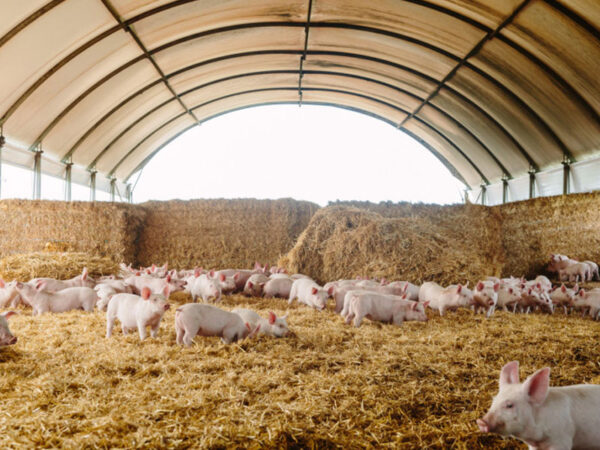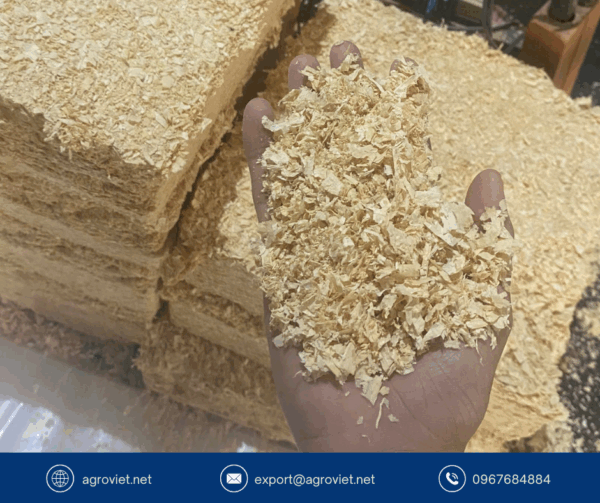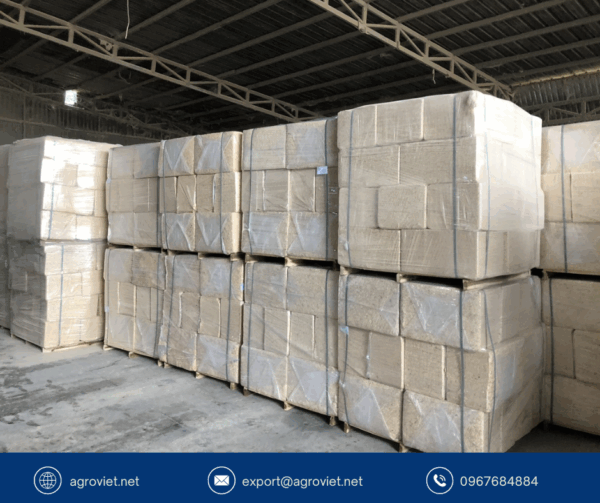Reduce Hoof Rot and Infections in Calves with Antibacterial Wood Shavings

Introduction to Hoof Rot and Calf Health
Hoof rot and infections, such as foot rot and digital dermatitis, are significant health concerns in cattle, particularly in calves, leading to lameness, reduced growth, and substantial economic losses. The MSD Veterinary Manual notes that hoof diseases can reduce productivity by 15–20%, impacting weight gain, milk yield, and reproductive performance. Wet, soiled bedding is a primary contributor, fostering pathogens like Fusobacterium necrophorum and Bacteroides that thrive in moist environments. Antibacterial wood shavings offer a dry, hygienic bedding solution, reducing infection risks and protecting calf health. This post explores the causes of hoof rot, its economic and health impacts, and how wood shavings can mitigate these issues, saving farmers thousands in losses.
Watch this: https://www.youtube.com/watch?v=-vWWyrFvOZM
Understanding Hoof Rot and Infections
Hoof rot, or foot rot, is an infectious condition caused by bacteria like Fusobacterium necrophorum, often in combination with Bacteroides nodosus or Porphyromonas levii, leading to painful lesions, swelling, and lameness. Digital dermatitis, another common hoof disease, involves ulcerative lesions caused by Treponema species. The MSD Veterinary Manual highlights that these conditions are exacerbated by wet, muddy, or manure-laden environments, with incidence rates increasing by 20–30% in poorly managed bedding. Calves are particularly vulnerable due to their developing immune systems and prolonged exposure to contaminated surfaces, making proper bedding critical for prevention.
The Role of Poor Bedding in Hoof Diseases
Wet or soiled bedding, such as straw or low-quality sawdust, creates a moist, bacteria-rich environment that promotes hoof rot and infections. The MSD Veterinary Manual explains that moisture softens hoof tissue, making it susceptible to abrasions and bacterial invasion. Litter moisture levels above 30% support pathogen loads of 10^6 CFU/g, increasing infection risk. Non-absorbent bedding fails to manage urine or manure, allowing bacteria to proliferate and penetrate hoof cracks or wounds. This environment also fosters secondary infections, like sole ulcers, which further impair mobility and growth, compounding economic losses.
Health and Mortality Risks
Hoof diseases significantly impact calf health, causing pain, reduced mobility, and decreased feed intake. The MSD Veterinary Manual reports that severe foot rot can lead to 5–10% mortality in untreated cases due to systemic infections or sepsis, particularly in calves. Digital dermatitis, if chronic, results in permanent hoof damage, reducing weight gain by 15–20% and increasing culling rates. In severe outbreaks, mortality can reach 10–15% if secondary complications, such as joint infections, occur. Poor bedding hygiene exacerbates these risks by sustaining pathogen survival, making dry, clean litter essential for calf survival and health.
Economic Impact of Hoof Diseases
Hoof diseases impose a heavy financial burden on farmers. The MSD Veterinary Manual estimates that lameness from foot rot or digital dermatitis costs $100–$300 per calf in veterinary treatments, reduced growth, and culling. For a 100-calf herd with a 20–30% incidence rate, annual losses range from $2,000–$9,000, including $50–$150 per calf for antibiotics (e.g., oxytetracycline) and $50–$200 for diagnostics like hoof trimming or cultures. Productivity losses, such as 15–20% reductions in weight gain, add $100–$500 per calf, while culling costs $500–$1,000 per animal. Wet bedding drives these costs by increasing infection rates, making effective litter management a priority for cost savings.
Why Antibacterial Wood Shavings are Effective
Antibacterial wood shavings, typically sourced from softwoods like pine, offer a powerful solution for preventing hoof rot and infections. Their natural antibacterial properties, derived from phenolic compounds in pine, inhibit pathogens like Fusobacterium necrophorum. Wood shavings absorb up to 200% of their weight in moisture, keeping litter below 20% moisture and reducing bacterial survival. Unlike straw, which traps moisture, or concrete, which causes trauma, wood shavings provide a dry, cushioned surface that minimizes hoof abrasions and supports calf comfort. Studies cited by the University of Maine Cooperative Extension show that absorbent bedding reduces lameness incidence by 20–30%, directly lowering infection rates and mortality.
Economic Benefits of Wood Shavings
Using wood shavings is economically advantageous compared to non-absorbent bedding. A 1-ton pallet of wood shavings ($150–$250) lasts 2–3 months for a 10-calf pen, costing $600–$1,000 annually for a 100-calf herd. Straw, at $50–$100 per ton, requires replacement every 1–2 weeks, costing $1,200–$3,600 annually. By reducing hoof disease incidence by 20–30%, wood shavings lower mortality from 10–15% to 7–10%, saving $500–$1,500 in dead calves and $1,000–$3,000 in treatments and production losses per outbreak. For a 100-calf herd, total savings reach $1,500–$4,500 annually, plus $600–$2,600 in reduced bedding and labor costs, as per the University of Maine Cooperative Extension.
Promoting Calf Health with Wood Shavings
Wood shavings create a dry, hygienic environment that protects calves from hoof rot and infections. Their absorbency reduces moisture and pathogen loads, while their soft texture cushions hooves, preventing abrasions and supporting mobility. Heat-treated shavings have low microbial contamination, further minimizing infection risks. When spread as a 4–6 inch layer and topped up weekly, wood shavings maintain a clean, comfortable surface that reduces stress and enhances immunity. The MSD Veterinary Manual confirms that dry bedding lowers environmental pathogen loads, helping farms achieve lameness rates as low as 10–15 cases per 100 calves, compared to the industry average of 20–30 cases.
Cost-Benefit Analysis
For a 100-calf herd, wet bedding leads to hoof disease outbreaks costing $2,000–$9,000 annually, including $1,000–$3,000 from 10–15% mortality, $500–$1,500 in treatments, and $500–$4,500 in reduced growth. Wood shavings, costing $600–$1,000 annually, reduce incidence to 14–21 cases per 100 calves, saving $700–$2,100 in mortality, $400–$1,200 in treatments, and $300–$3,000 in production losses. Total savings range from $1,400–$6,300 per year, with additional reductions in labor and disposal costs. Improved weight gain adds $50–$100 per calf, enhancing profitability.
Long-Term Economic Advantages
Wood shavings provide lasting benefits by reducing disease recurrence and improving calf performance. Dry bedding minimizes pathogen survival, lowering reinfection rates and supporting immunity. Farms using wood shavings report 10–15% higher weight gain, saving $1,000–$3,000 annually for a 100-calf herd. Reduced antibiotic use aligns with regulations, avoiding penalties and supporting market access. Lower mortality and culling save $500–$1,000 per calf, compounding savings over time. These benefits make wood shavings a sustainable investment for long-term profitability.
Practical Tips for Bedding Management
Farmers should spread 4–6 inches of wood shavings in calf pens, topping up with 1–2 inches weekly to maintain absorbency. Daily cleaning removes soiled litter, preventing pathogen buildup, as recommended by the MSD Veterinary Manual. Ventilation providing 6–8 air changes per hour keeps litter dry, while storing shavings in a dry area prevents mold. Sourcing from reputable suppliers ensures low-dust, antibacterial shavings, optimizing health benefits and reducing labor costs.
Complementary Prevention Strategies
In addition to wood shavings, farmers can use footbaths with copper sulfate or zinc sulfate ($10–$50 per treatment cycle) to control digital dermatitis. Regular hoof trimming ($10–$20 per calf) prevents lesions, while vaccinations for clostridial diseases reduce secondary infection risks. Sanitation of pens and equipment minimizes contamination, and balanced nutrition supports immunity. Regular lameness checks, as advised by the MSD Veterinary Manual, detect issues early, reducing treatment costs.
Welfare and Regulatory Benefits
Wood shavings enhance calf welfare by reducing pain and stress from lameness, aligning with ethical farming standards. Lower disease rates decrease antibiotic use, meeting consumer demand for sustainable production and avoiding regulatory penalties. The MSD Veterinary Manual emphasizes that hygienic bedding is critical for lameness control, supporting calf health and market competitiveness. Improved welfare reduces culling, saving $500–$1,000 per calf and enhancing farm reputation.
Addressing Bedding Management Challenges
Wood shavings cost more upfront ($150–$250 per ton) than straw ($50–$100), but their durability reduces replacement frequency, saving $600–$2,600 annually for a 100-calf herd. Daily cleaning and proper storage prevent compaction and mold, ensuring hygiene. Reputable suppliers provide high-quality shavings, minimizing dust and toxins. These practices make wood shavings a practical, cost-effective solution for hoof disease prevention.
Conclusion
Wet, soiled bedding drives hoof rot and infections in calves, causing 5–15% mortality and $2,000–$9,000 in annual losses for a 100-calf herd, with productivity reductions of 15–20%. Antibacterial wood shavings, costing $600–$1,000 annually, reduce disease incidence by 20–30%, saving $1,400–$6,300 per year and protecting 25% more calves. Supported by the MSD Veterinary Manual, wood shavings create a dry, hygienic environment that minimizes pathogen growth, enhances welfare, and boosts profitability. By adopting proper bedding and complementary strategies, farmers can mitigate hoof disease risks, reduce mortality, and achieve sustainable, cost-effective calf rearing.

Read more: https://vietnambestwood.com/general/how-to-calculate-wood-shavings/
